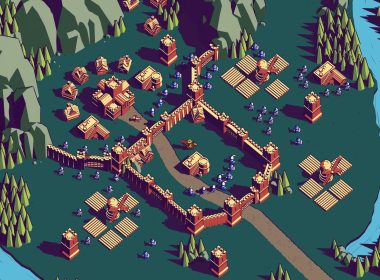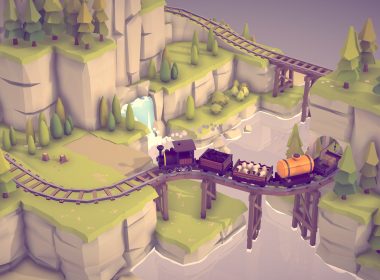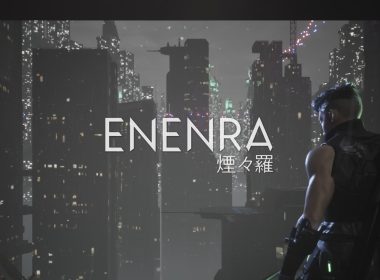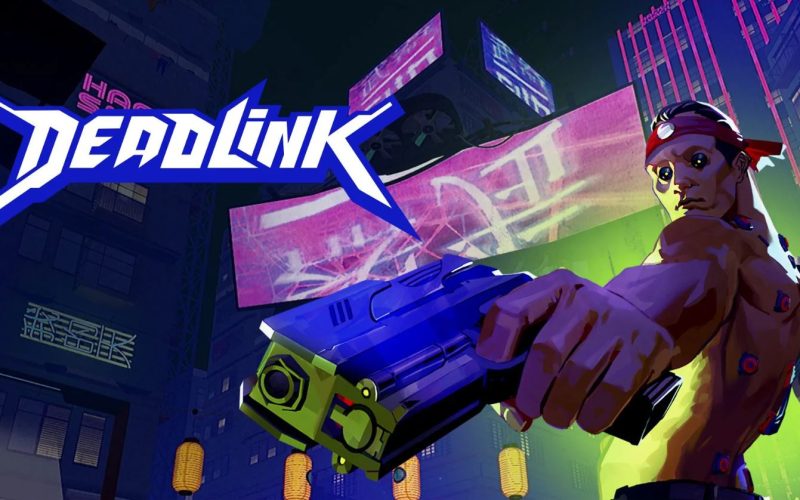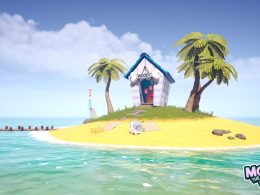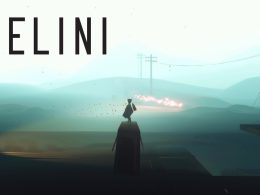Welcome to an exclusive interview with Tomas Sala, the accomplished game developer behind the BAFTA-nominated “Falconeer” – a game that has garnered widespread acclaim and captured the hearts of gamers worldwide. Today, we delve into the realm of his latest masterpiece, “Bulwark,” a highly anticipated title that has sparked excitement and intrigue among gaming enthusiasts and fellow developers alike.
From the outset of our conversation, it becomes clear that Tomas’s passion for the craft extends far beyond his own projects. He recognizes the importance of knowledge-sharing and nurturing the growth of the gaming community. Whether it’s discussing innovative gameplay mechanics, artistic inspirations, or the challenges faced during development, Tomas’s transparency is a breath of fresh air in an industry that often shrouds its creative process in secrecy.
This spotlight featuring the Unity team is a clear example of how Tomas is contributing back to the industry:
Hey, Tomas! Before we dive into the exciting details of your journey, let’s begin this interview with a quick overview of your recent past: Falconeer, your remarkable game that garnered a BAFTA nomination, has captivated audiences worldwide. Prior to delving into game development, could you share the story of your journey and how you found your way into this crazy world of creating games?
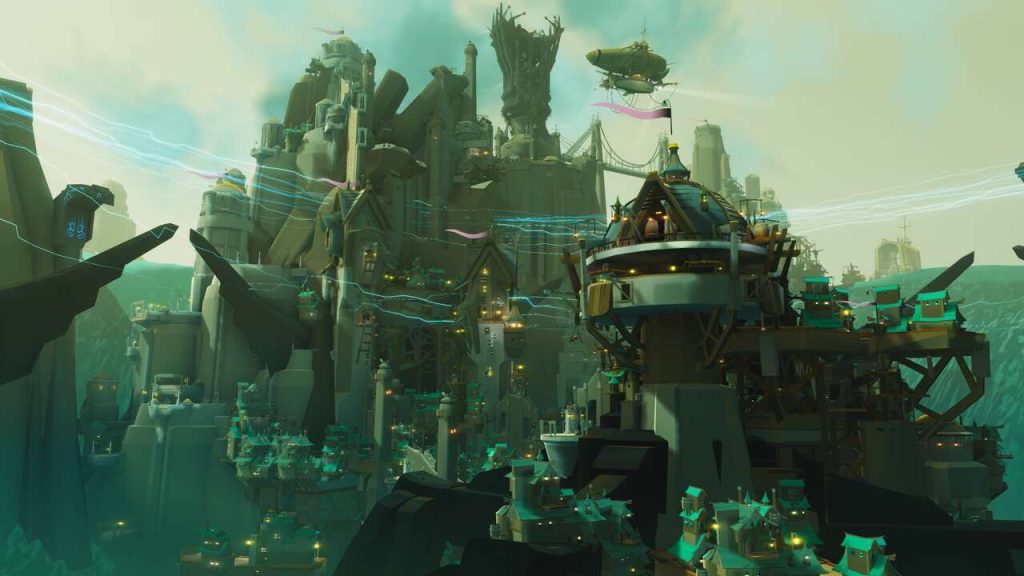
I’ve always wanted to make games, I think like many gamers the medium just captivated me from my childhood onward. Drawing grew into digital paintings in deluxe paint and Corel Draw into signing up for artschool and then figuring out early 3D modelling tools like Lightwave which rolled into director,flash a first 3D engine called Virtools and I’ve just not stopped since. I’ve done so many things within this industry it’s kinda weird.
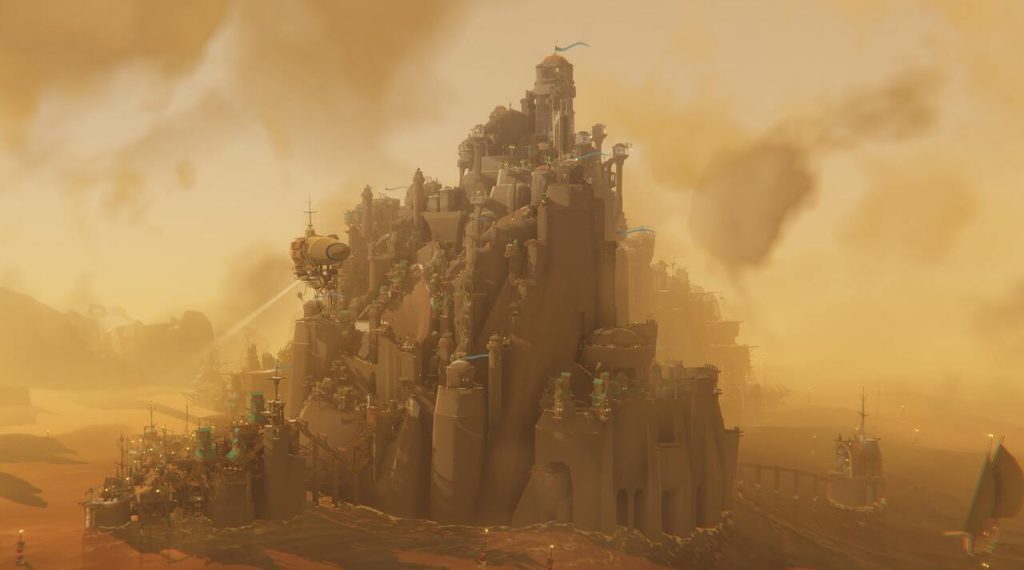
I’ve made games for brands , marketing on the web, for mobile, for educations , schools even in hospitals, did VR, among the first google cardboard VR apps that did over a million installs, then did VR with SIEE as a publisher for PSVR1 and then mods. Some gamers might remember the “Moonpath to elsweyr” jungle themed mods for Skyrim I did those and gave away a ton of models to the modding community. The “Dev aveza airship mod” I didn’t make, but they did use my base airship model (highly improved by them). Modding was a bit of a roll into indiedev with “Oberon’s Court” a game I never finished but that led directly to the Falconeer which led to Bulwark which I’m working on now.
Having personally tried the Bulwark demo, I must say there is something truly special about it. One aspect that immediately caught my attention was the introduction, which is creatively delivered through your own voice speech. It’s a refreshing and innovative idea that adds an extra layer of immersion. Now, could you please provide a brief introduction to Bulwark and highlight a couple of key points that you believe make it a must-play title for our readers?
Bulwark is a weird mixture of ideas, it’s an organic builder where you paint the landscape with these fortified settlements. But it’s also an open world game so you get to build wherever you want. And then it’s also a game with a minimalist UI that tries games to be chaotically creative and not be as ‘goal’ oriented as normally in games. Not that min/max efficiency mindset, I feel that can get into the way of the more childish enjoyment of creating a cool castle and just exploring that sensation
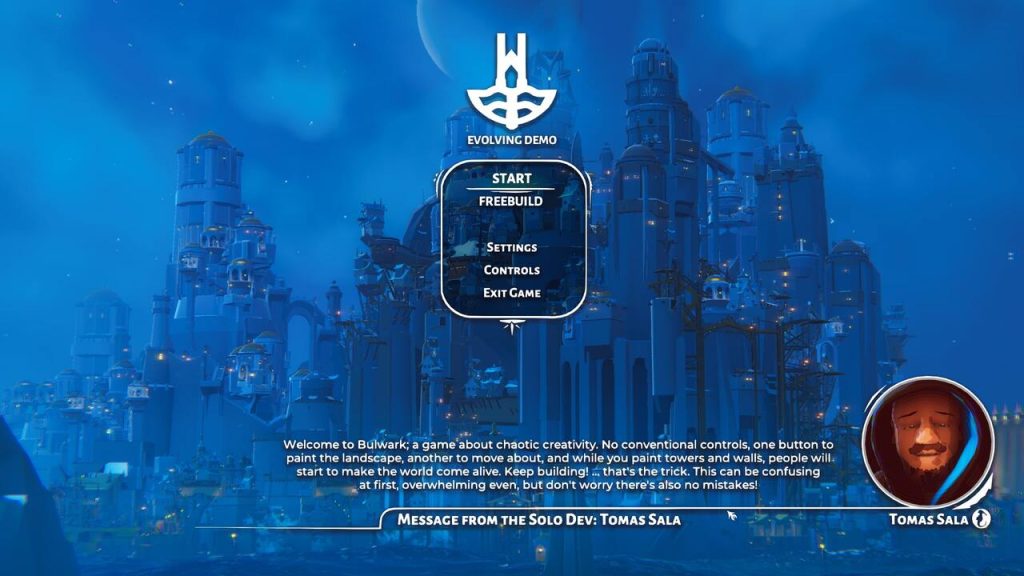
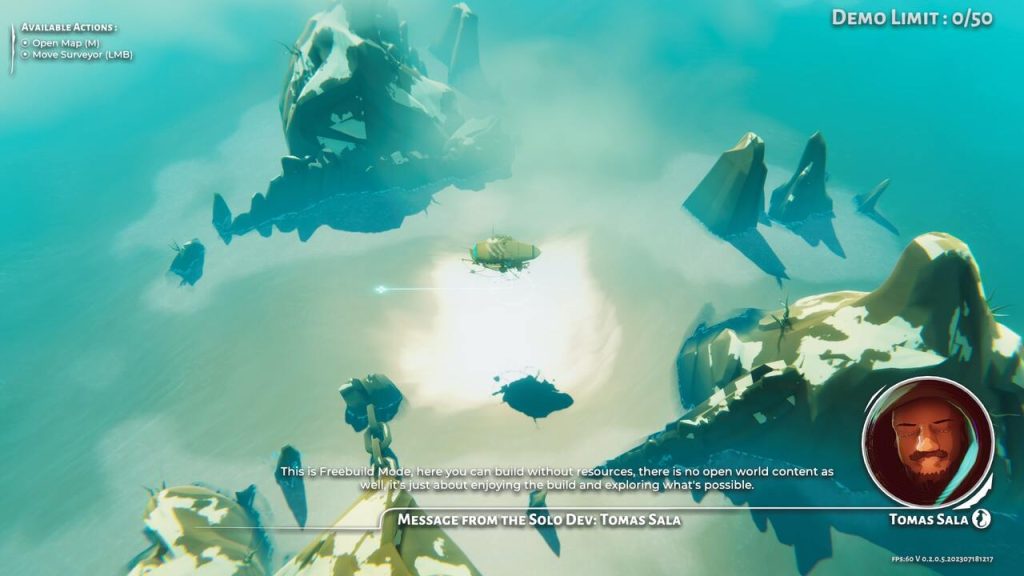
From my understanding, you are single-handedly working on Bulwark. I’m curious to know how you manage to handle multiple roles such as game designer, developer, artist, marketer, and more. How do you effectively divide your time and expertise among these different aspects of game development?
Yes I mostly work alone, I have a publisher for the marketing of course (tho I do some of that myself as well) and I am lucky to work with Benedict Nichols, one of the great indie composers, for all things audio. I code, animate, model, write, design and do all the hands-on development.
When I’m done or a project is near its end I work with Stefan Wijnker to do what’s called porting. That’s taking the game I’ve created and making it work with the different storefronts and specific requirements from platforms such as playstation and Xbox.
95% of the time this means I’m making the game by myself in the little studio I’ve build in the garden 😉
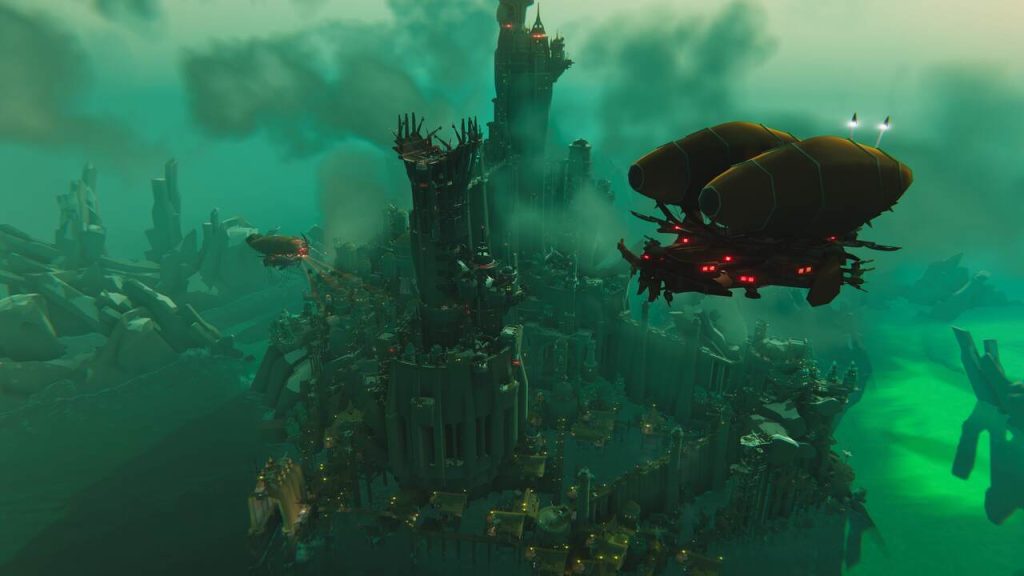
How this is possible, I think my diverse background and experience helps, but I also really like working alone and trying to design and develop new things. When I worked in teams I wasn’t the guy who would be very organized or a great team player (one reason I left that world). I think it’s something that just clicks for me, and todays tools and the industries that have sprung around indies actually allow me to survive that way.
Let’s dive into the technical aspects now! It’s fascinating to learn that Bulwark is implemented in Unity, and I must say, the game’s aesthetics are absolutely stunning. I came across your intriguing self-description on LinkedIn as the “abolisher of textures” which I found quite amusing and relatable (I hate working on UVs). So, could you shed some light on the secrets behind achieving such an astonishing design primarily through the clever utilization of post-processing techniques? Another curiosity on graphics: which rendering pipeline have you chosen to adopt for Bulwark?
The rendering pipeline for Bulwark is good ‘ol Unity Built-in. But I’ve replaced literally every shader with my own custom shaders, which creates the unique look. I’ve taken to imposing very strict limits on what I can do technically to force myself to find new avenue’s and discover new tricks to attain certain effects I want. So the game has no textures (cept the font map and a dynamically generated perlin noise) and I use math basically (lots of sine waves in shaders) to create all the effects , shading and lighting in the game. It’s not as hard as you imagine , it’s just a different approach and saves tons of time in the asset creation stage , as I don’t have to unwrap or texture anything. Basically it’s moving all the creation effort forward into a tech art pipeline. It took a lot of time to get it right, but now It’s blazingly fast for me to create and implement new content.
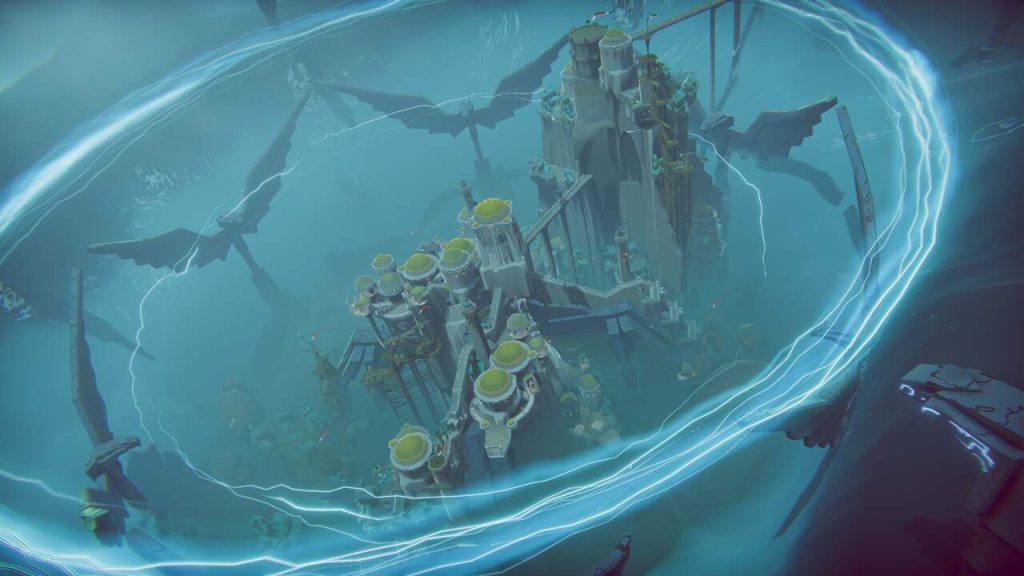
I’m intrigued by the procedural generation aspect of Bulwark. One thing that caught my attention is how the constructions, particularly the “roads” that connect different buildings, seamlessly integrate with the terrain, appearing natural and perfectly adapted. Implementing such flawless integration between procedural and in-scene items must have posed its challenges. Could you share some insights into the process and the difficulties you encountered while achieving this impressive level of cohesion?
Hahaha I think I’m good at smoke and mirrors. Because the implementation is far cry from say something as elegant and mathematically sound as Townscaper. I’ve just designed an art set of chunks, buildings and segments that really work well when they don’t connect perfectly. The game is both messy and clean, but the work I do visually is to make sure that all that chaos looks cool and cohesive… smoke and mirrors.

Having gone through the journey of developing Bulwark, are there any valuable suggestions or advice that you would like to share with other indie developers who are embarking on their own projects? Are there any recommendations or lessons you wish you had received when you first started your own endeavor?
Oooh that is the dreaded advice. I believe the indie world looks very frightening, AI synthesis, a tsunami of new games every month, influencers that are unreachable or ask a lot of money, showcases that ask even more. It’s a daunting period. But I believe all of this is also going to mean that those that survive aren’t the artists and devs with the flashiest games, those things will be available soon to anyone if not already. But what’s going to differentiate you from the competition is … you. If you try to find your unique story, put your heart to it, and learn to shape that into a thing that connects with an audience, then you will find you’ve made something unique, something that cannot be copied by AI, that’s not another clone to compete with a thousand other clones. You will have created a unique work of art which besides having its own value will also stand out in ways no other work will.
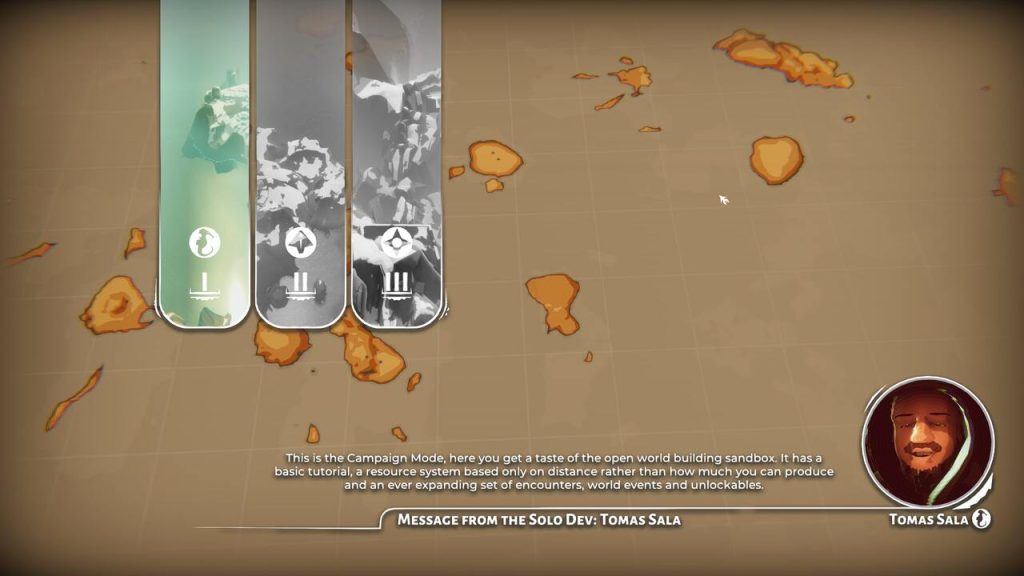
This may sound wishywashy in a world where we are all subscribed to marketing and gamediscovery newsletters, but I have great faith that if you reach within and get in touch with a real creative source rather than copying the herd you will find success .
